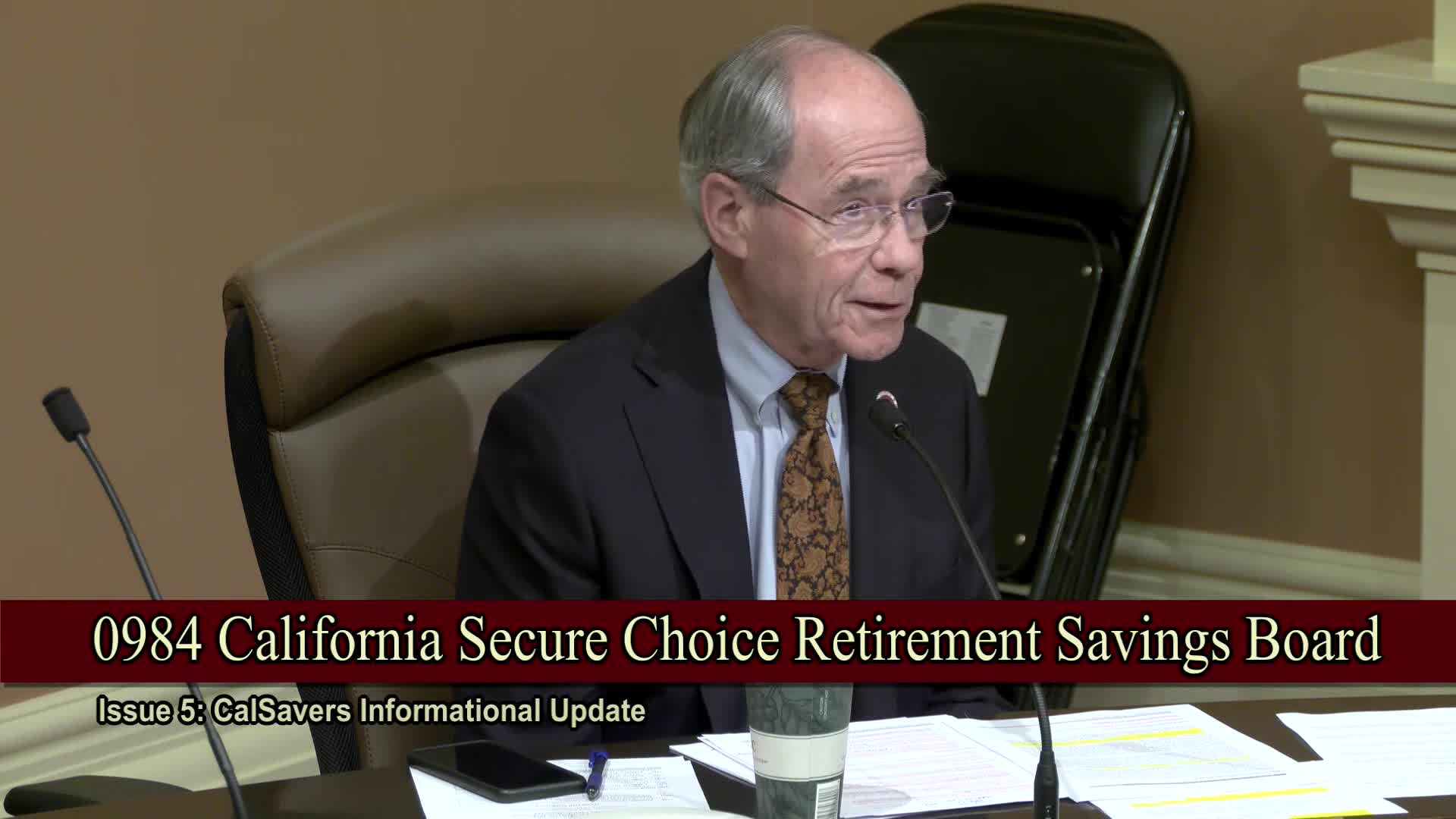California expands CalSavers program to support micro employers with retirement savings
April 24, 2025 | California State Senate, Senate, Legislative, California
Thanks to Scribe from Workplace AI and Family Portal , all articles about California are free for you to enjoy throughout 2025!

This article was created by AI using a video recording of the meeting. It summarizes the key points discussed, but for full details and context, please refer to the video of the full meeting. Link to Full Meeting
As the meeting unfolded, committee members expressed concern over the program's current reach and effectiveness. With approximately 58,000 employers enrolled, the program has made strides since its inception six years ago. However, it was noted that nearly half of California's private sector employers still do not offer any retirement plans, raising questions about the enforcement of the program's mandate. The challenge lies in nudging these employers into compliance without imposing penalties that could jeopardize their businesses.
The conversation highlighted the high turnover rates among employees in the sectors targeted by CalSavers, where many workers frequently change jobs. This mobility complicates tracking contributions and maintaining engagement with the program. Despite these hurdles, data suggests that the introduction of CalSavers has led to a 20% increase in larger businesses offering retirement plans, indicating a positive ripple effect on the broader financial landscape.
Senators voiced skepticism about the program's ability to meet its ambitious goals, particularly regarding account balances. With average savings hovering around $2,000, concerns were raised about whether this amount is sufficient to secure a comfortable retirement for low-wage workers. The committee emphasized the need for ongoing evaluation of key metrics to ensure the program is effectively facilitating savings.
Looking ahead, the subcommittee discussed plans to expand the program to include micro-employers, those with as few as one employee. This move is seen as crucial for reaching more workers, but it also presents challenges, as these small businesses often lack the resources and expertise to navigate retirement plan administration. To address this, the program is introducing incentives for early participation and exploring automated payroll integration to simplify the process for employers.
As the meeting concluded, the overarching sentiment was one of cautious optimism. While significant progress has been made, the path forward requires careful consideration of the unique challenges faced by small employers and their employees. The committee's commitment to refining the program and enhancing financial education for savers will be vital in achieving the goal of secure retirement for all Californians.
Converted from Senate Budget and Fiscal Review Subcommittee No. 4 on State Administration and General Government meeting on April 24, 2025
Link to Full Meeting
Comments
View full meeting
This article is based on a recent meeting—watch the full video and explore the complete transcript for deeper insights into the discussion.
View full meeting
